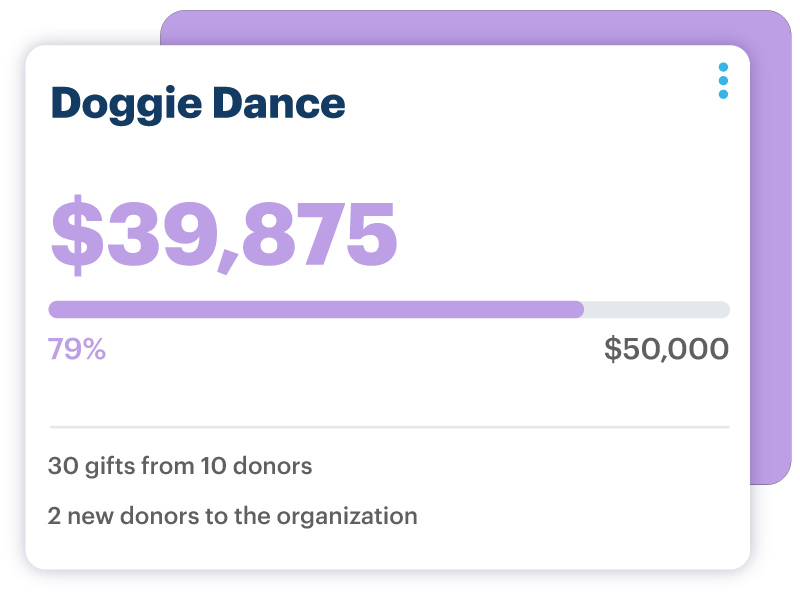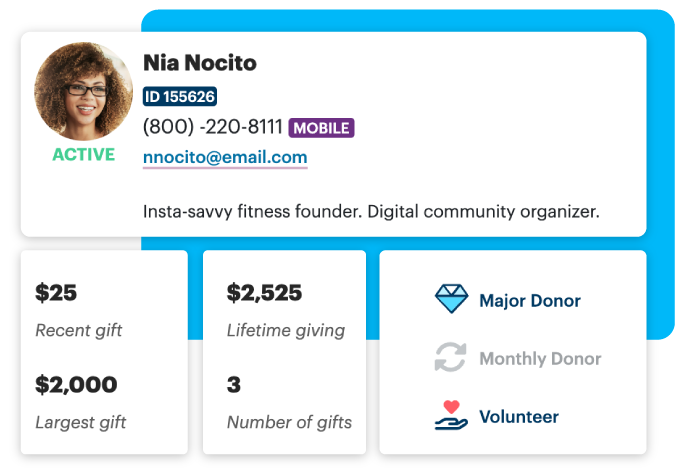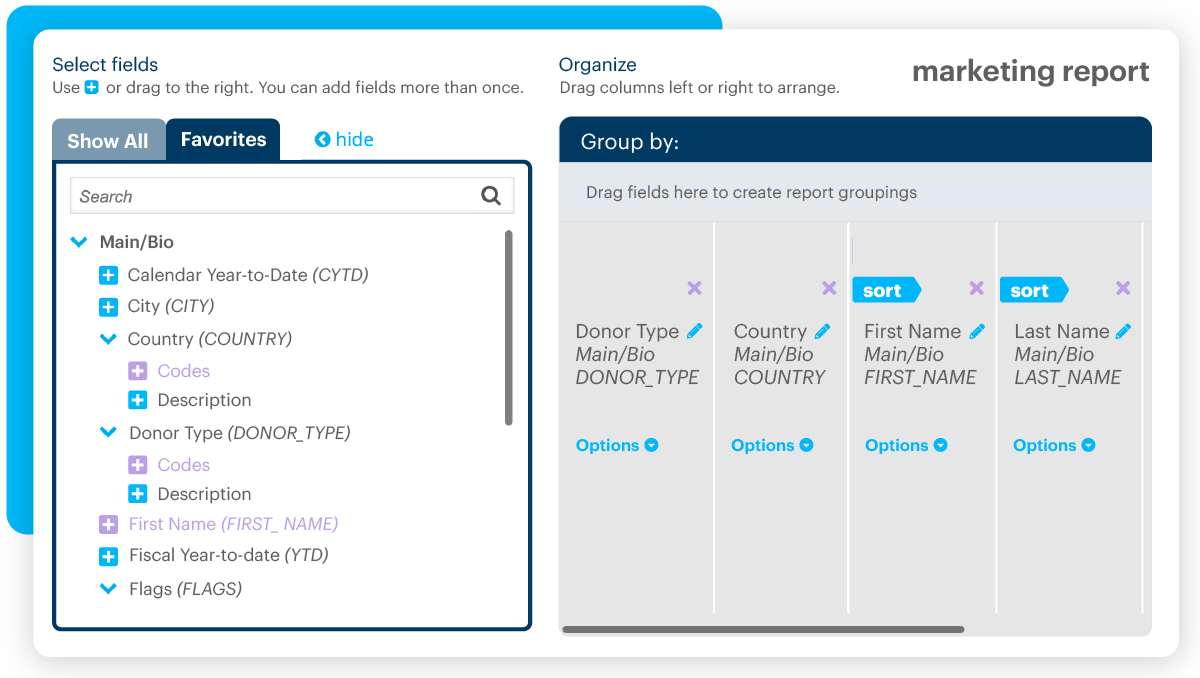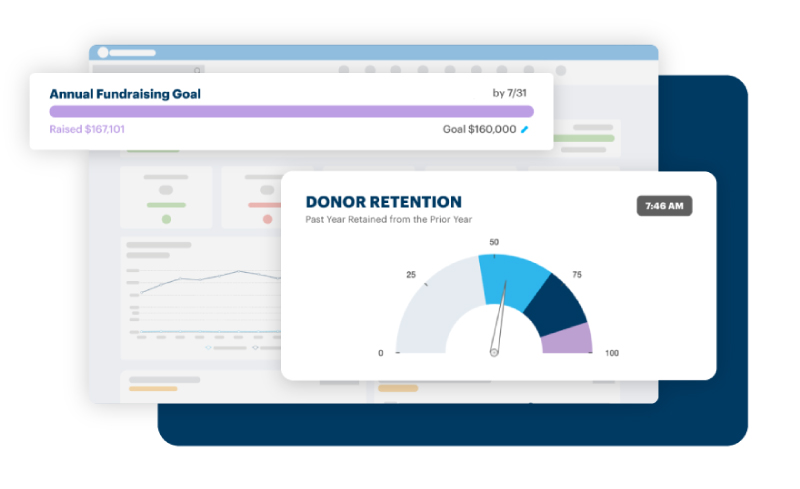Nonprofit Technology & Fundraising Blog
Subscribe to our mailing list

July 1, 2025 | Donor Data, Donor Engagement, Fundraising Operations, Planning
Your nonprofit strategic plan outlines where you’re going. Your fundraising strategy shows how you’ll get there. When aligned, these tools help leadership stay focused, build donor trust, and mobilize resources to advance your mission.
As your nonprofit evolves—whether by expanding services, growing a monthly giving program, or launching a capital campaign—your fundraising strategy must reflect your organizational priorities.
In this guide, we’ll help you connect your strategic goals with fundraising initiatives using the example of a fictional university’s effort to expand student access to research and experiential learning as a running example.
Strategic planning and fundraising often happen separately. Aligning them creates a unified path to growth, focusing resources, inspiring donors, and ensuring every dollar supports your mission.
When fundraising and strategic planning align, your nonprofit benefits from:
Your annual development plan outlines what you need to raise—and how you’ll do it—through major gifts, monthly giving, sponsorships, grants, and more. Grounded in your strategic plan, it helps your team focus efforts, align data, and track progress.
In previous posts, we explored why strategic planning matters, how to prepare for it, and how to build a results-driven plan. Now, it’s time to connect that strategic vision to the fundraising strategy that brings it to life.
Strategic plans typically span 3–5 years (e.g., 2026–2029), setting your nonprofit’s long-term priorities. Each year, your development team can translate those priorities into a focused fundraising plan, outlining goals, donor strategies, timelines, and revenue projections for the fiscal year ahead.
This layered approach keeps your team responsive to donor trends while staying rooted in mission priorities, ensuring each direct solicitation, appeal, or campaign supports a defined strategic goal.
Now, let’s explore our example of a strategic plan for a fictional university:
To illustrate how strategic and fundraising plans align, we’ll follow a fictional university that’s prioritizing access to research and experiential learning.
To guide long-term growth and impact, our fictional university’s strategic plan outlines key priorities and measurable goals. One of its central initiatives focuses on expanding student access to research and experiential learning, with clearly defined outcomes and supporting tactics to drive progress over the next three years.
Strategic priority – Expand access to research and experiential learning for undergraduate students
Goal – Increase student participation in research opportunities and internships by 40% over three years
Objective – Engage at least 1,500 undergraduate students in hands-on learning by Year 3
Tactics – Specific actions that staff can take to achieve results, include:
Pro tip: Get a head start! Write out your development plan in Q4 of your current fiscal year so that it’s ready to launch in Q1 of the next fiscal year.
To turn strategic priorities into action, the development team builds a targeted fundraising plan that supports key milestones in the first year of the initiative. This plan focuses on securing the resources needed to launch new programs, expand staff capacity, and eliminate financial barriers for students. Fundraisers can meet with academic leaders to align program needs with potential resources.
Goal – Fund Year 1 priorities
Objective – Raise $1 million by fiscal year-end to:
Key strategies – Combine a variety of revenue streams to support program launch and student success, such as:
Timeline highlights
In the university example, the student access initiative represents just one component of the broader fundraising strategy. The year-end giving push should be carefully coordinated with general annual fund appeals to ensure clear donor communication and avoid overlap. By segmenting donors based on giving history, capacity, and interests, the development team can tailor messaging that supports both unrestricted giving and strategic priorities, without causing donor fatigue.
Pro tip: Be sure to check in on goal progress at the start of each new quarter.
Start by reviewing your strategic plan and evaluating priorities that:
Spot strategic goals that need funding early. Start your fundraising plan by turning those priorities into clear financial goals.
Pro tip: Meet as a cross-functional team to flag fundable priorities and assign projected costs. This ensures that fundraising efforts are grounded in real operational and programmatic needs.
For example, nonprofits use DonorPerfect’s campaign tools to plan, track, and report on strategic initiatives, so your team can stay focused on fundraising goals, like the university’s $1 million target.

These priorities provide the framework for your annual fundraising plan, enabling your team to focus its time and resources on funding the right initiatives at the right time.
University example: Step 1
The university’s strategic plan includes a goal to increase student participation in research and internships by 40% over a three-year period. For this year’s development plan, the team identifies a top fundraising priority: securing funds for student grants and hiring program staff to expand access for students with financial need.
Support each strategic objective with specific, measurable fundraising metrics. Before launching any campaign, revisit these indicators (a quick check-in) to ensure funding needs and projections are still accurate, especially if several months have passed since your strategic plan was created.
Your annual development plan should break multi-year goals into clear, time-bound fundraising targets with aligned donor strategies for your upcoming fiscal year.
For the various objectives, ask:
Fundraising objectives should be SMART—specific, measurable, achievable, relevant, and time-bound, as explained in Part 3 of this series. For example, “Raise $250K” becomes more actionable as “Raise $250K in 12 months through individual major gifts and one grantmaker.” These benchmarks guide campaign design and team accountability.
University example: Step 2
To support their access initiative, the development team sets a SMART fundraising objective: Raise $1 million by fiscal year-end to:
Pro tip: Be realistic—break large goals into manageable targets with achievable milestones and checkpoints to monitor progress. When engaging donors to fulfill these goals, do so with intention and based on individual relationships.
While Step 2 defines what you need to raise, Step 3 focuses on how and when you’ll raise it. This ensures your fundraising plan is both strategic and donor-centric.
Map out your fundraising year based on the timing and needs of your strategic initiatives.
Your development plan outlines how much revenue your organization must raise in the coming fiscal year, via gifts, grants, sponsorships, and other fundraising sources (excluding program or event income). It also details the strategies, timelines, and donor segments needed to meet those goals. This plan helps your team stay focused on key priorities, with a clear path for the year.
Building timelines around each strategic initiative ensures your fundraising activities are timely and targeted. Instead of one static calendar, create goal-based timelines that map key milestones like appeals, donor outreach, and stewardship activities. This flexible structure helps your team remain focused while adapting to changing campaign needs.
Pro tip: If you start reaching out to individual major gift prospects at the start of the fiscal year, you can navigate donors’ busy schedules and travel plans early, giving you some extra time throughout the fiscal year to engage them.
University example: Step 3
The development team builds a quarterly fundraising roadmap tied directly to the initiative’s Year 1 priorities. Early in the fiscal year, they focus on major gift cultivation and grant preparation. Mid-year activities shift toward launching their alumni campaign and promoting monthly giving, while corporate sponsorship outreach supports internship placements. By Q4, all solicitations are complete, early outcomes are shared, and stewardship efforts are underway, setting the stage for Year 2 planning.
Your development plan is going to have multiple fundraising goals with objectives, tactics, and timelines. Once your development plan is in place, you can turn your focus to segmentation and donor engagement strategies that bring each initiative to life, covered next in Step 4.
Once your development plan is set, segment your donor base to personalize your outreach. Donors give for different reasons—aligning your strategy with your strategic plan helps you tailor appeals to what matters most to each group. During your outreach, you may discover new donor interests or shifts.
Start by using your nonprofit CRM to group donors based on:
This approach helps you tailor messaging and proposals based on donor interests and relevant outcomes. To implement these insights—and cut down on manual entry—you can automate data maintenance tasks like updating donor records and tracking engagement.
For example, DonorPerfect’s SmartActions keep donor engagement aligned with your development plan—automating touchpoints, follow-ups, and alerts. These tools help your team stay focused on goals like securing major gifts and stewarding recurring donors for multi-phase initiatives.
Pro tip: Use donor data and past campaign insights to guide the timing and content of your appeals. A data-informed timeline ensures your campaigns align with strategic milestones and maximize engagement across donor segments. For example, if more of your major donor prospects travel at certain times of the year, place their initial engagement or solicitation meeting at an appropriate time.

University example: Step 4
Using CRM segmentation, the university identifies alumni who previously participated in undergraduate research and have a giving history. These donors receive personalized outreach featuring student research stories and opportunities to fund grants. Meanwhile, the development team targets younger alumni and faculty with monthly giving options tied to specific impact (“$50/month = one week of research support”).
Pro tip: Layer prospect research into your segmentation strategy. Tools like DonorSearch, which integrates with DonorPerfect, help identify donors ready for re-engagement or aligned with new initiatives, improving response rates and deepening long-term relationships.
Want to go deeper on using donor data to inform your plan? Download our free resource: How to Use Data to Manage Your Nonprofit, a practical guide for smarter segmentation, forecasting, and planning.
Fundraising isn’t complete at the point of gift—it continues through impact reporting and ongoing engagement. When donors see how their support drives mission success, retention rises. This is your chance to connect data to storytelling, using visuals and updates that reinforce progress on strategic goals.
Use your plan to:
University example: Step 5
As grants are designated and internships get planned out for the future, the team launches a “Student Impact Spotlight” email series. Real-time dashboards show progress toward their $1 million goal and supporters who have opted in to be recognized. Thinking ahead, Year 2 and Year 3 quarterly updates can highlight student stories, reinforcing how donor support is driving tangible outcomes year over year.
Just like internal metrics help drive execution, external updates show donors how their support moves your mission forward. By reporting to donors regularly, you may acquire additional funding from them as you work to complete your primary objectives in your strategic and fundraising plans.
Pro tip: Use visuals (charts, dashboards, storytelling videos) to make a strategic impact tangible. Reporting can be aligned to fiscal-year targets outlined in your development plan, ensuring internal accountability and donor transparency.
With DonorPerfect’s reporting and analytics tools, your team can track progress toward key milestones like dollars raised and donor segments engaged, ensuring full transparency on goals like the $1 million target to support student access.

Strategic plans evolve—and so should your fundraising strategy. At the end of each year (or major campaign), evaluate both your progress and alignment to improve outcomes moving forward.
Use these reflection points to assess and adjust:
This reflection isn’t just about performance—it’s about improving how well your fundraising efforts continue to support your strategic goals. Use what you learn to sharpen next year’s objectives, donor engagement strategies, and team capacity planning.
Use reflection as a team activity. Involve development, programs, and leadership to gain cross-functional insights and strengthen alignment moving forward. University development staff should connect with academic partners to evaluate outcomes.
University example: Step 6
At year-end, the university team evaluates progress toward its $1 million fundraising objective. Major gifts exceeded projections, and 500 student grants were awarded. However, alumni engagement lagged. In response, they adjust Year 2 plans—adding virtual storytelling events and revamping monthly giving content. These refinements help maintain momentum and deepen alignment with the broader student access initiative.
Pro tip: You can use DonorPerfect’s dashboard analytics to monitor performance against key fundraising objectives, like securing funds for program staff, resources, and grant funds. Real-time insights make it easy to measure what matters and adjust strategy as needed.

When fundraising and strategic planning are connected, your nonprofit can:
Whether you’re expanding programs or investing in infrastructure, aligning your fundraising strategy with your strategic plan ensures that every dollar advances your mission.
DonorPerfect gives you the tools to bring your plan to life—track progress, segment donors, and launch strategic campaigns with confidence.
Ready to align your fundraising strategy with your nonprofit’s mission? Explore DonorPerfect to see how our CRM can help you engage donors, raise more, and drive results.
This concludes Part 4 of our Strategic Planning for Nonprofits blog series—but it’s just the beginning of putting your strategy into action. With the right tools, data, and team alignment, your strategic plan can become a results-driven engine for growth and donor engagement.
Want to revisit earlier posts in the series?
1. How do I tie our fundraising calendar to our strategic plan?
2. How do I communicate alignment with donors?
3. With competing priorities, how can I plan and also work efficiently?
4. How can we encourage our board to support alignment?
Leverage your nonprofit CRM to align fundraising and planning.
Follow us on social!